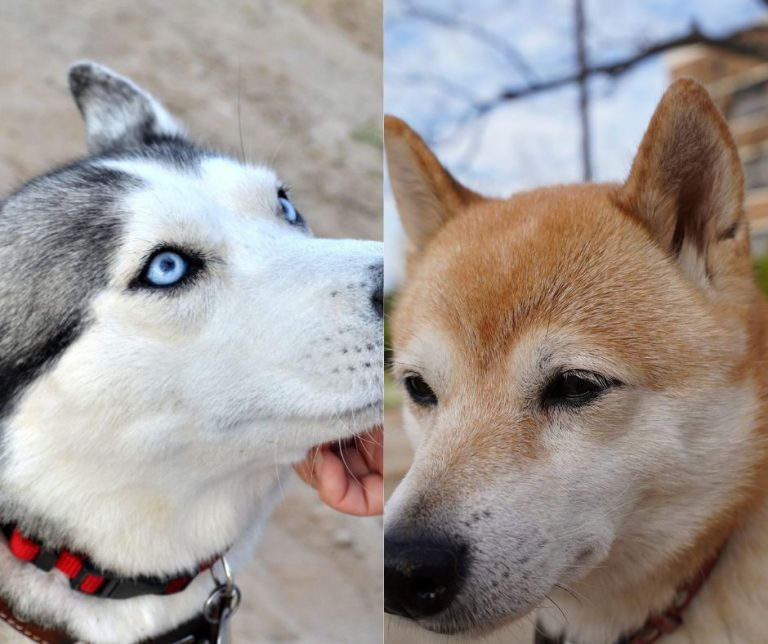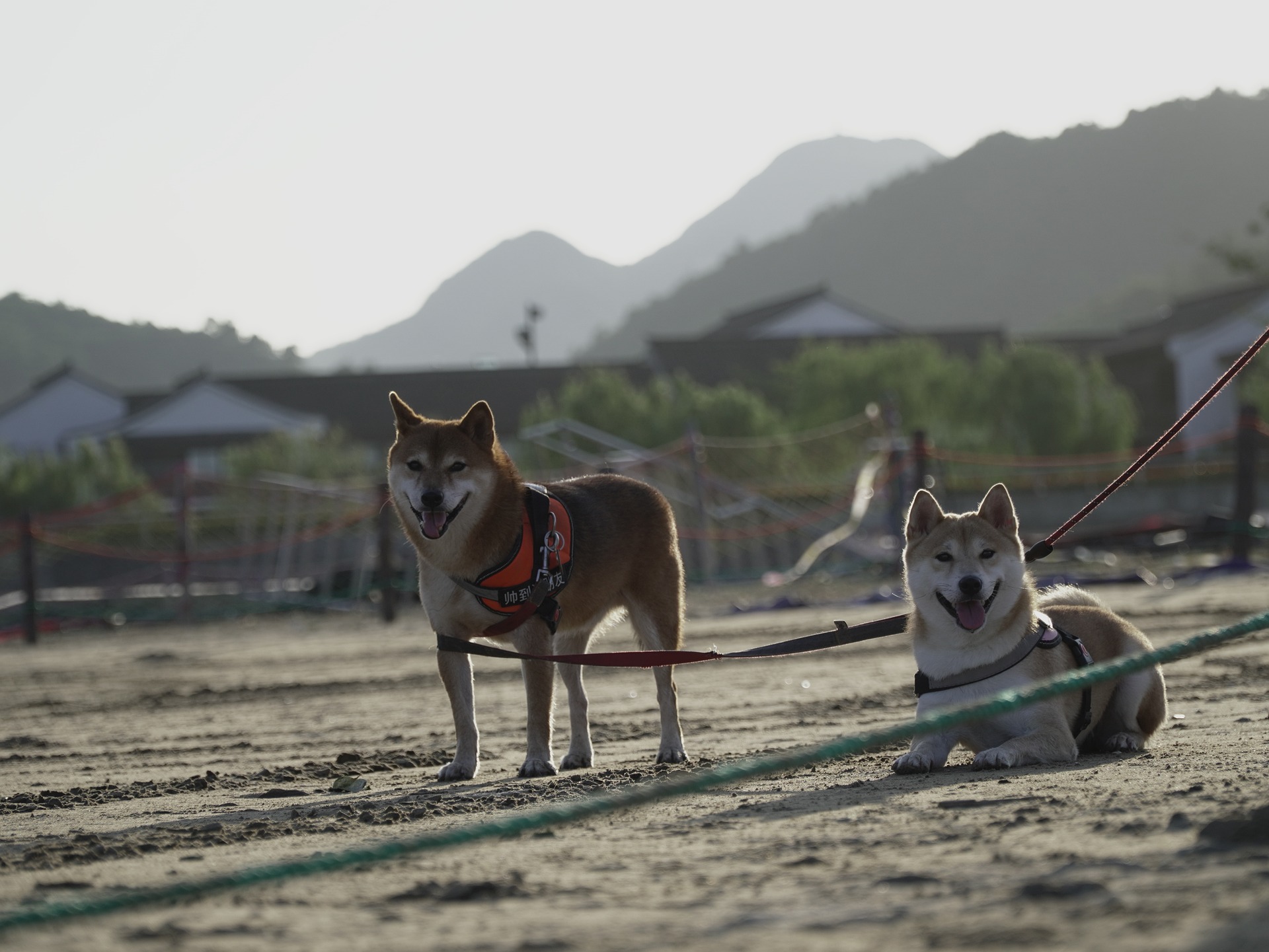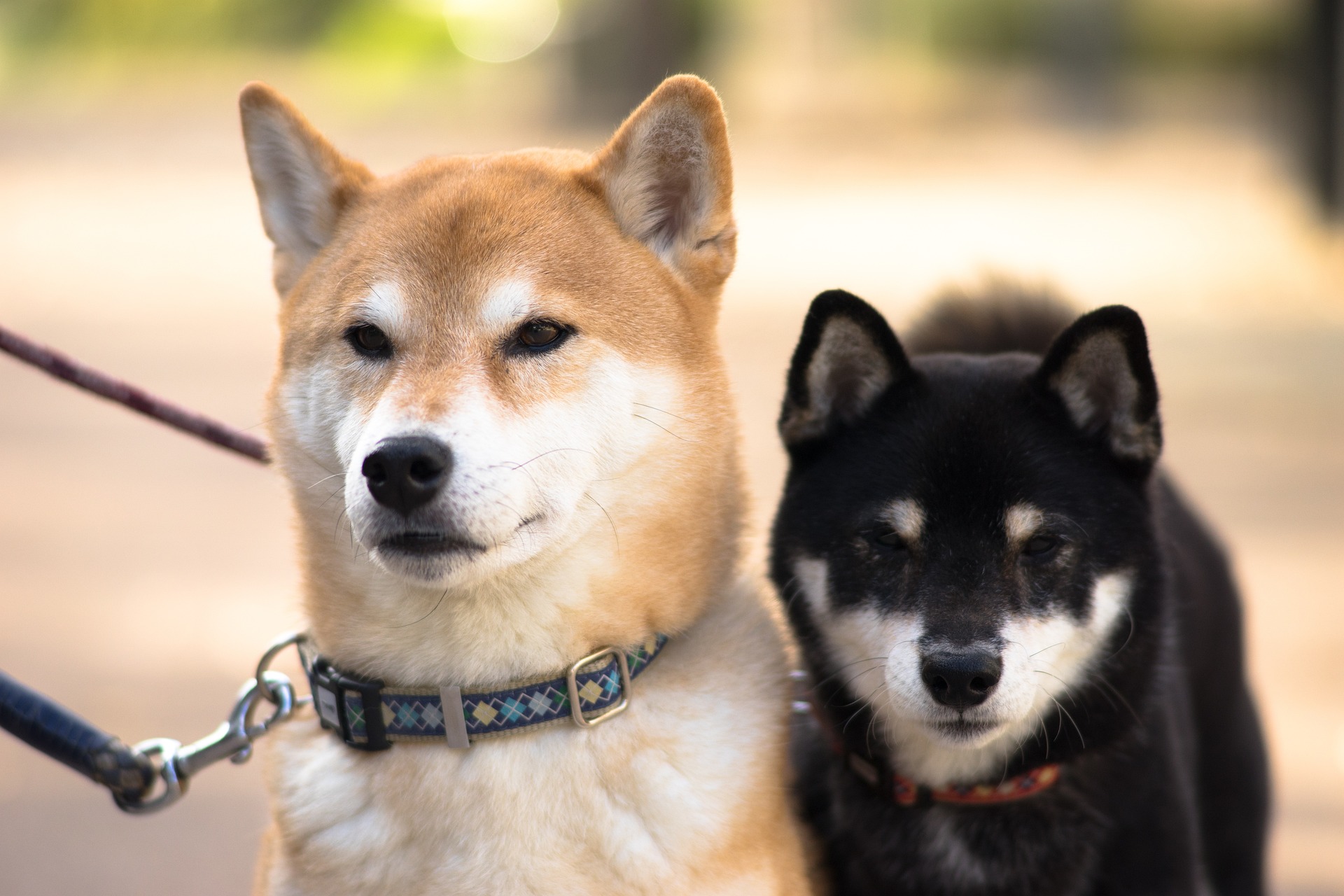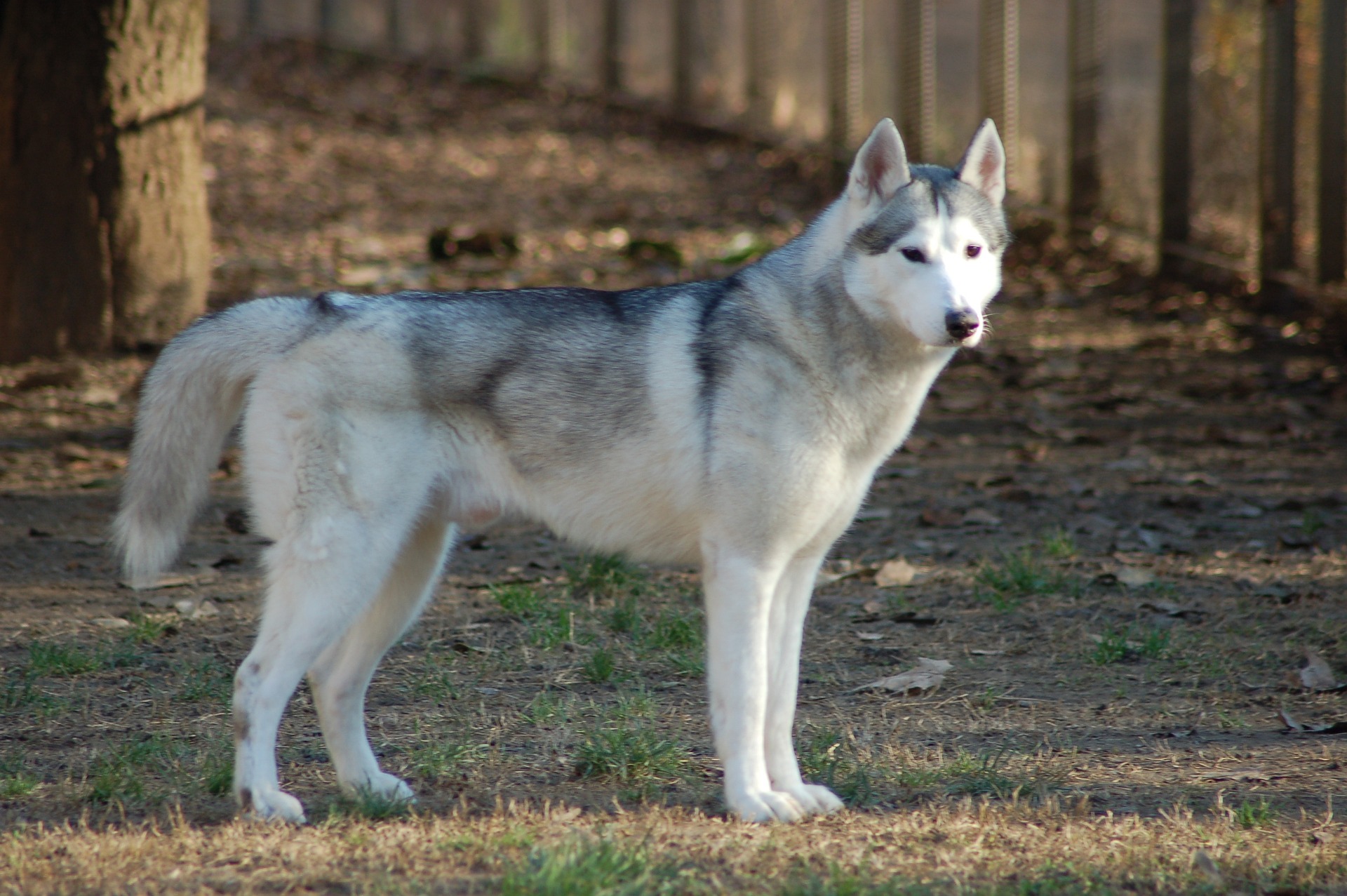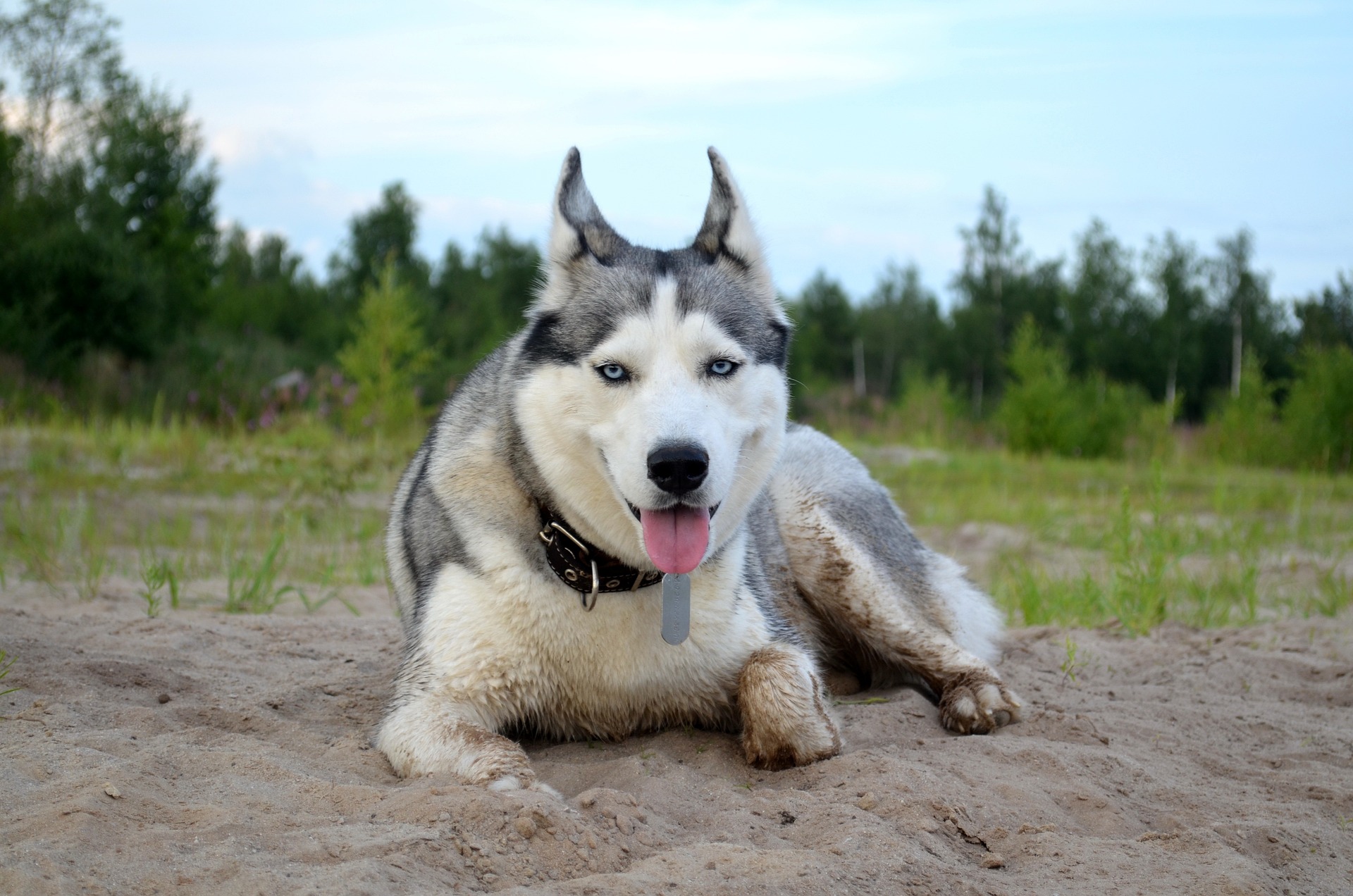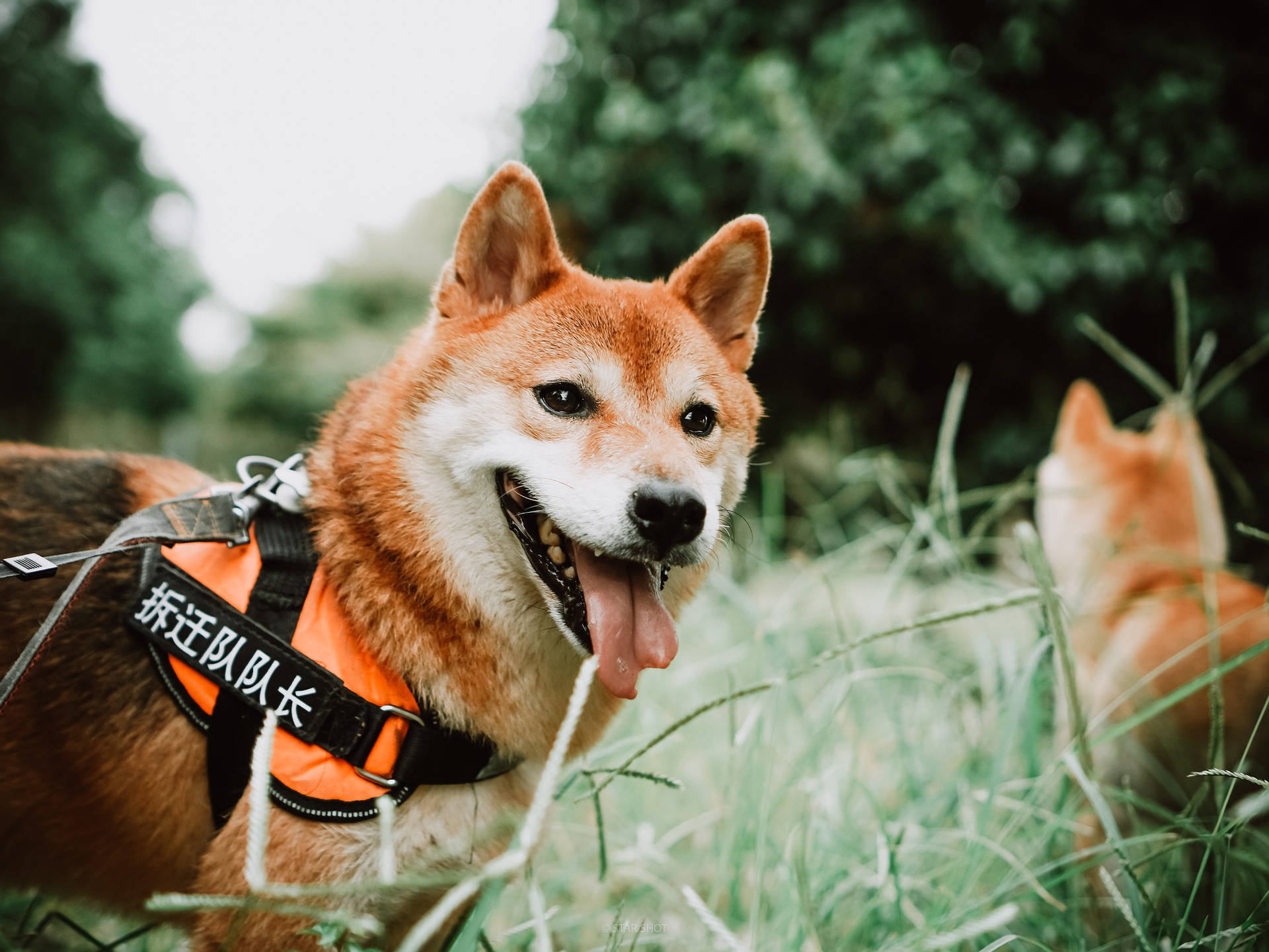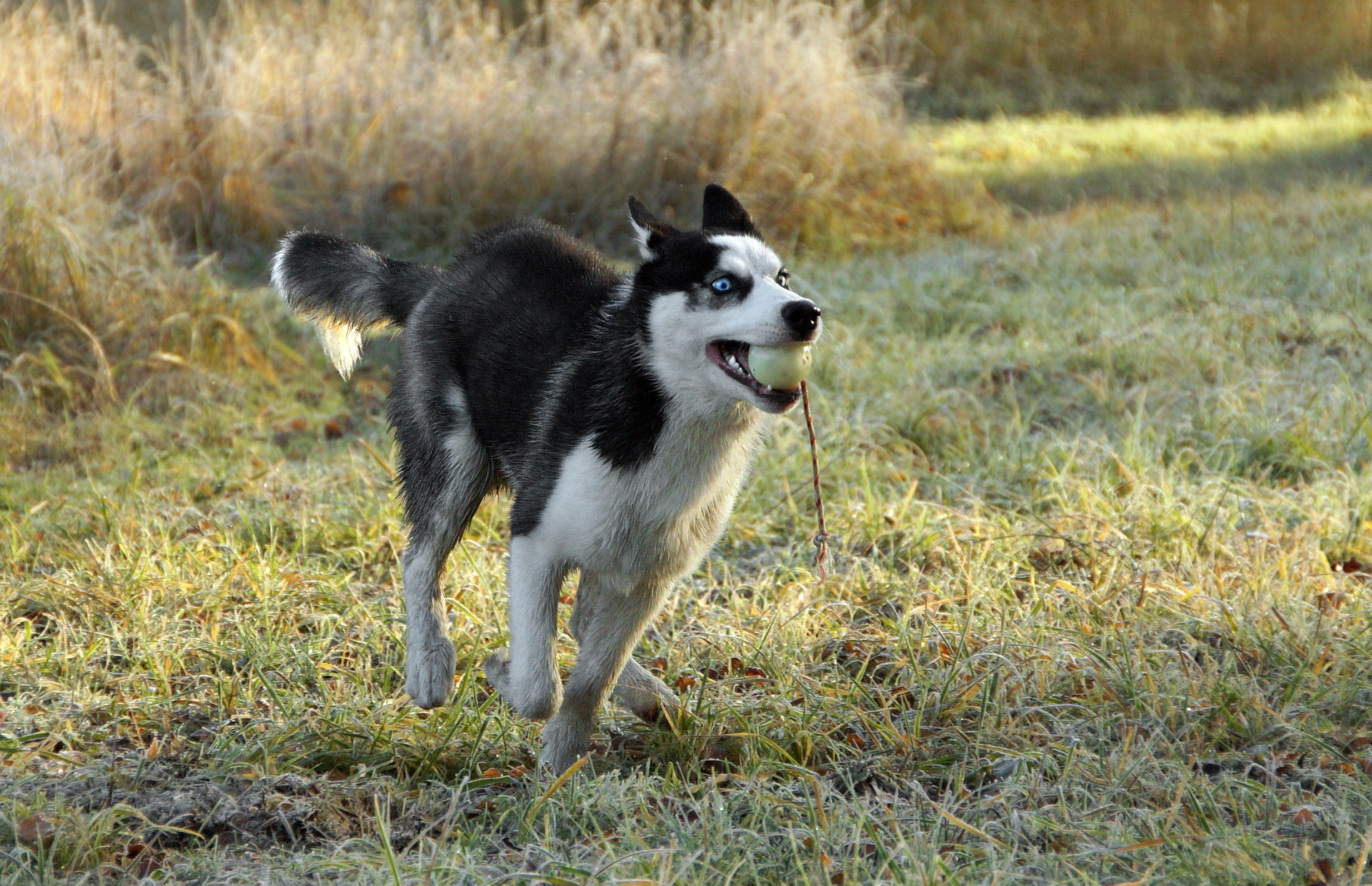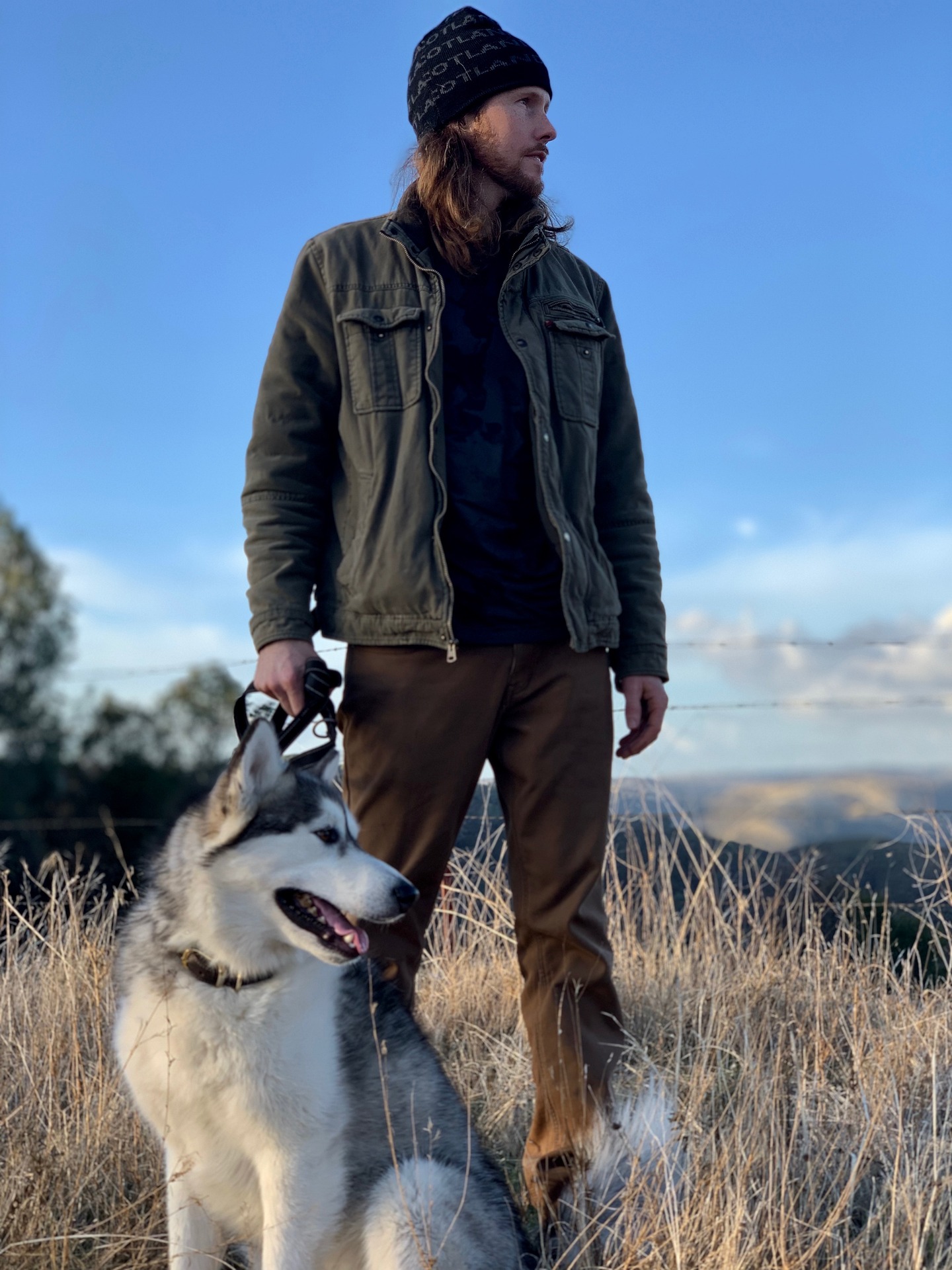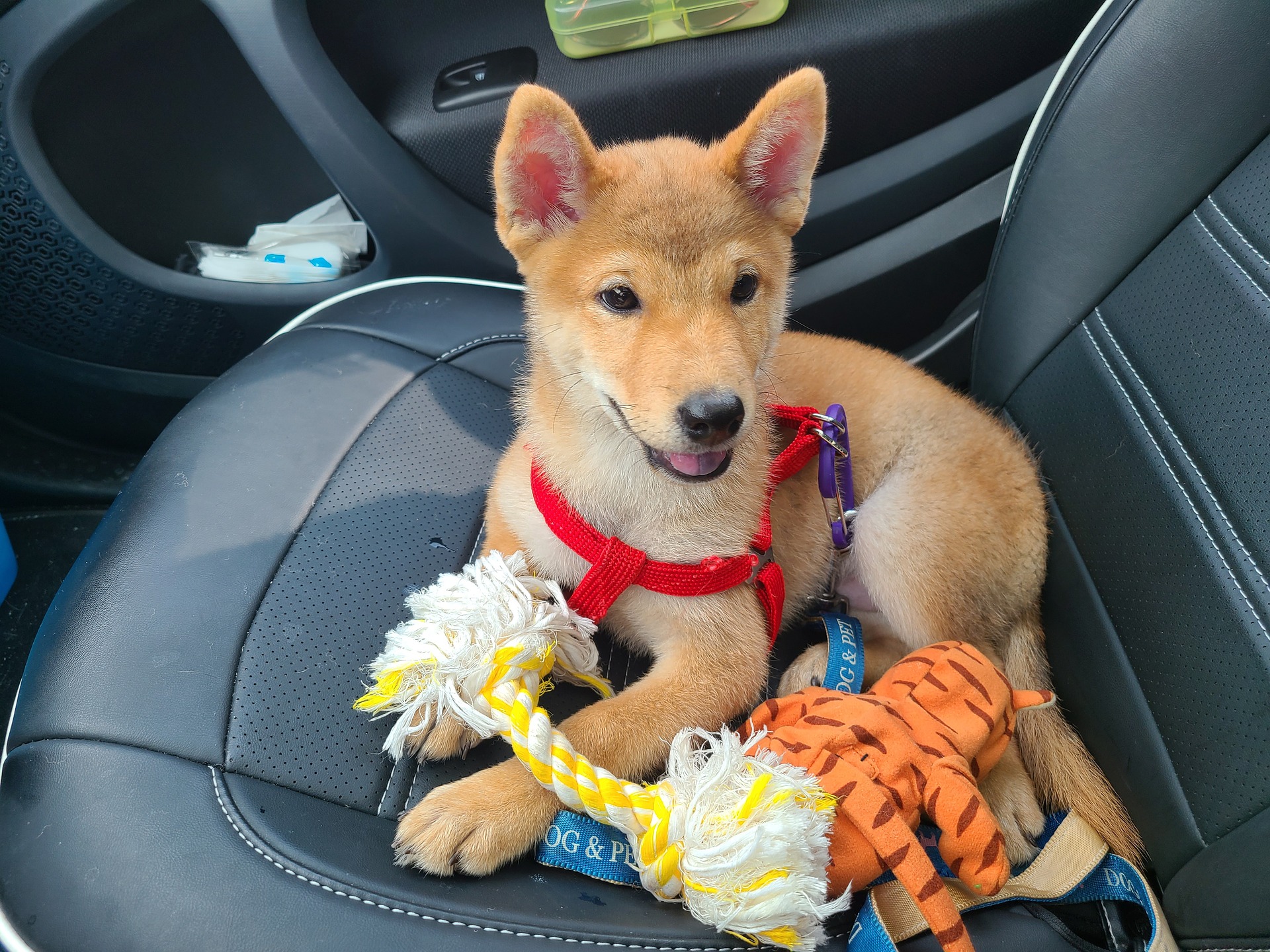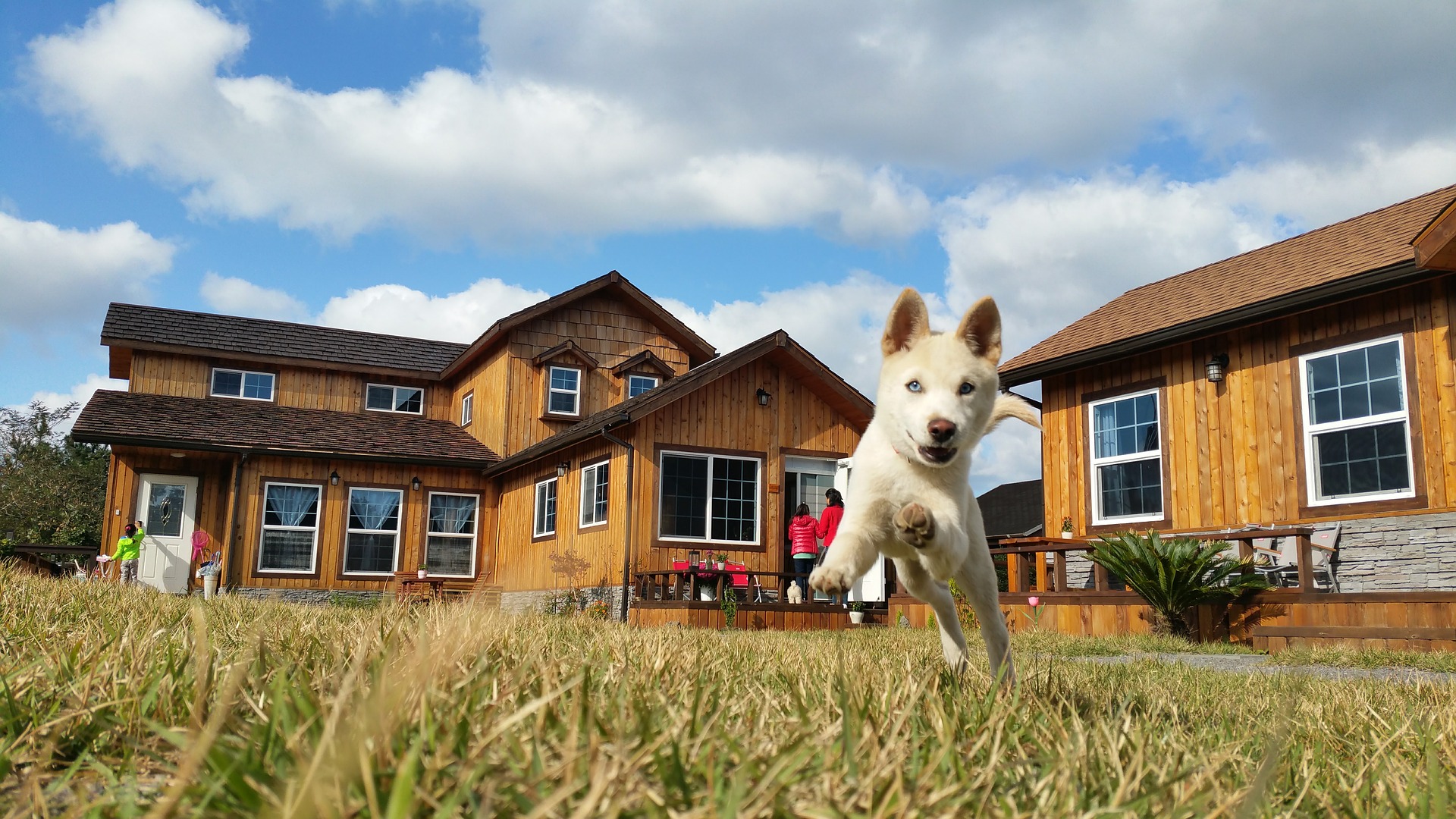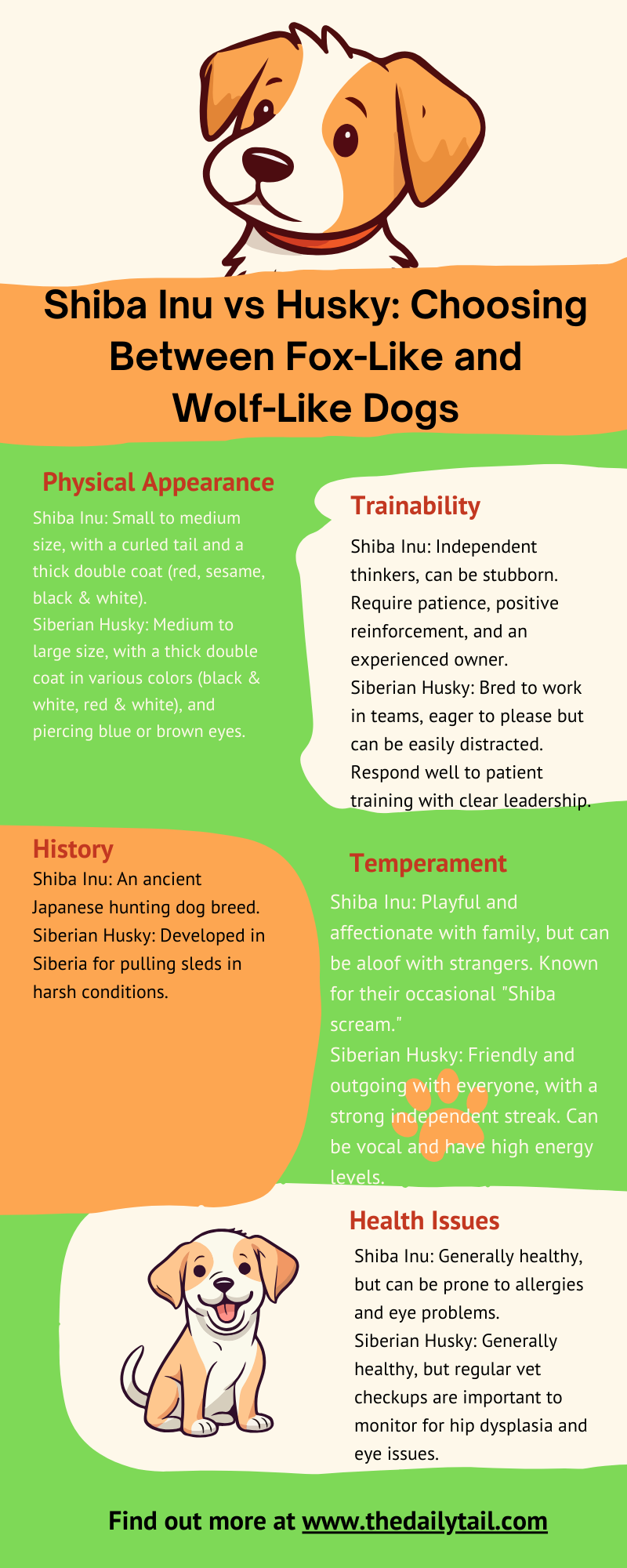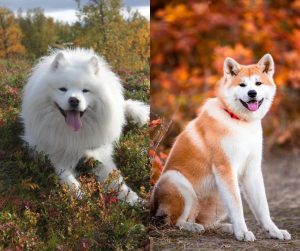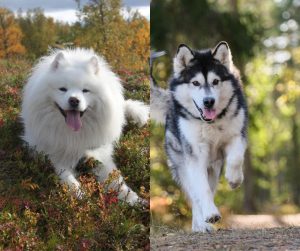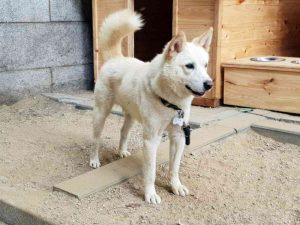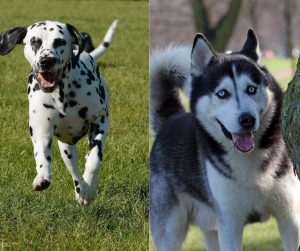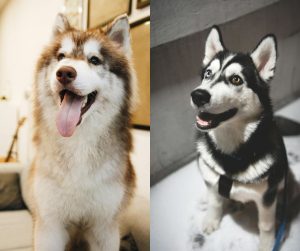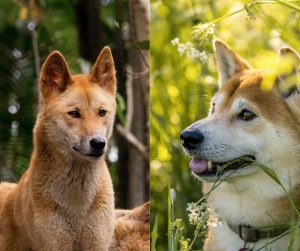For years, I’ve walked countless dogs, each with their own unique personality. Two breeds that always turn heads are the Akita Inu and the Siberian Husky. Both are powerful and majestic, but after spending time with them, I realized their personalities are as different as their winter coats.
When considering a new furry companion, dog lovers often look for a breed that matches their lifestyle and personality.
The Shiba Inu and the Siberian Husky are two breeds that often capture the hearts of potential dog owners with their striking looks and unique attributes.
While the compact Shiba Inu, with its fox-like appearance and fiery persona, might be perfect for some, others might find the outgoing and energetic Husky a better fit.
Understanding the inherent differences between the Shiba Inu and the Husky is crucial for a harmonious match.
Originating from different parts of the world, each breed bears distinct physical and temperament traits that cater to different preferences and environments.
From the Shiba Inu’s independent nature and smaller stature to the Husky’s friendly demeanor and requirement for exercise, these breeds show how varied man’s best friend can be. Let’s take a deeper look into the Shiba Inu vs Husky dog breed comparison.
Key Takeaways
- Shiba Inus and Huskies offer contrasting choices in temperament, with the former being more independent and the latter more sociable
- Physical and exercise needs differ greatly between the two breeds, impacting your daily routine
- Potential owners should consider longevity and care requirements to ensure a suitable match for their household
Breed Origins
When exploring the rich histories of the Shiba Inu and the Siberian Husky, one uncovers tales that span continents and centuries.
Shiba Inu Origins
The Japanese Shiba Inu boasts an ancient lineage that places it among Japan’s most treasured canine.
Often linked to the spitz family—a group of dogs characterized by their fox-like features, pointy ears, and thick fur—the Shiba Inu has been a part of Japanese history for thousands of years.
Initially bred for hunting in the dense underbrush of Japan’s mountainous regions, they have been companions to humans since antiquity. In fact, the term “Shiba” refers to both a type of small brushwood and the breed’s reddish coat, which is as fiery as autumn leaves. A lot of people mistake the Shiba Inu for the Japanese Akita Inu. While they look similar, there are more differences than just the size.
Husky Origins
On the opposite side of the globe, the Siberian Husky’s story starts with the Chukchi people of the Arctic.
Engineered to be durable and disciplined, these dogs were integral to the Chukchi way of life as sledge dogs, facilitating the transportation of goods and people across the vast, icy expanses of Siberia.
Built to withstand harsh arctic conditions, Huskies are known for their endurance and strength. Despite their challenging environment, these dogs thrived alongside their human counterparts, becoming a critical component of the Chukchi’s survival in the unforgiving climes of the Arctic.
Nowadays, Huskies are often mistaken for their cousin, the Alaskan Malamute. But they originate from different places. There is also a difference between a Siberian Husky and Alaskan Husky.
Shiba Inu vs Husky Physical Characteristics
When comparing the Shiba Inu and Husky, their distinct physical traits stand out. From their size to their thick double coats, these breeds display unique looks that reflect their different heritages and functions.
Size and Weight
Shiba Inus are often considered small to medium-sized dogs. Adult male Shiba Inus stand approximately 14.5 to 16.5 inches tall at the shoulder, and females are a tad shorter, typically measuring 13.5 to 15.5 inches.
In terms of weight, they usually tip the scales at around 17 to 23 pounds.
In contrast, Huskies are undoubtedly a larger breed, falling into the medium size category.
An adult Husky can reach a height of 20 to 23.5 inches and may weigh between 35 to 60 pounds. This size difference is a direct reflection of the breeds’ original purposes: Shiba Inus were bred for hunting in the rugged terrains of Japan, while Huskies were developed to pull sleds in the snow-laden expanses of Siberia.
Coat and Colors
Shiba Inus have a double coat that boasts a straight and stiff outer layer coupled with a soft and thick undercoat, which they shed twice a year during shedding season. This coat is brilliantly adapted to offer protection against both cold and warm weather.
Color-wise, Shiba Inus often come in shades of red, sesame, black and tan, or cream.
Huskies, famous for their endurance in cold climates, also sport a double coat that is dense and fluffy, helping them to withstand freezing temperatures. They usually shed their undercoat during the shedding season, requiring extra grooming effort.
Huskies display a vivid array of colors and markings, including various combinations of black, grey, red, and agouti, often complemented by striking white patterns.
Distinct Features
Both breeds have their own unique characteristics that enhance their appearance.
Shiba Inus have a fox-like look with erect triangle-shaped ears and deep-set, almond-shaped eyes. They carry their tails curled over the back, which is a hallmark of the breed.
Huskies are often recognized for their wolf-like features, which include a thicker set of fur, a broad skull, and their notable almond-shaped eyes.
These eyes can come in striking colors such as blue, brown, or even a combination of both in a single individual. Huskies also have a bushy tail that they carry in a sickle shape rather than curled over the back.
Shiba Inu vs Husky Temperament and Personality
Choosing between a Shiba Inu vs Husky often comes down to understanding their distinctive temperaments and personalities. These breeds have unique traits that endear them to people, but they also have differences that make them better suited to specific environments and lifestyles.
Shiba Inu Temperament
Shiba Inu dogs are known for their bold and spirited personality. They carry an almost cat-like independence, often preferring to do things on their own terms.
While they can be affectionate with their family, they may exhibit aloofness toward strangers, embodying a reserved demeanor.
In terms of energy, Shiba Inus have moderate to high energy levels, requiring regular playfulness and exercise to keep them happy. However, their independent streak means they’re also content entertaining themselves at times.
Husky Temperament
On the other hand, Siberian Huskies are the epitome of an energetic and friendly disposition. They’re more social than Shiba Inus, often welcoming both familiar faces and new friends with enthusiasm.
This breed is much more affectionate and open to showing love, making them great family pets.
They are packed with energy, needing substantial exercise and mental stimulation daily. Despite their outgoing nature, Huskies can have an independent side too, which requires patient and consistent training.
Shiba Inu vs Husky Exercise and Training
When it comes to maintaining a happy and healthy life for a Shiba Inu or Husky, exercise and training are non-negotiable. Both breeds have unique needs and challenges that any potential owner should understand.
Activity Needs
The Siberian Husky is an energetic breed that thrives on physical activity.
Originally bred to pull sleds over long distances, Huskies have high energy levels and require ample exercise daily to stay fit and avoid boredom.
Allowing them to run in a secure, open space, or taking them for long walks or hikes, can be effective ways to meet their exercise needs.
In contrast, the Shiba Inu is an ancient breed from Japan known for its adept hunting skills in mountainous terrain, thus demanding less intense exercise but still needing regular activity.
Moderate daily walks, coupled with some playtime, are typically sufficient to satisfy a Shiba Inu’s exercise requirements.
Training Challenges
Intelligence and independence come into play significantly when training these breeds.
Huskies are trainable yet can be stubborn, requiring a patient and consistent training regimen. They respond best to positive reinforcement techniques and can excel in various dog sports.
Shiba Inus, while also intelligent, can present more training challenges due to their strong-willed nature.
They are known for being difficult to train, valuing their independence often more than pleasing their owners.
Firm and consistent training from an early age is key, and they need to understand that their human is in charge.
Health and Lifespan
When choosing a furry friend, it’s vital to understand their potential health concerns and how long they might be part of the family. Both Huskies and Shiba Inus tend to share a comparable lifespan, but they do face their own unique set of health challenges. Fun fact, there is also a Shiba Inu Husky mix. If you cannot decide between these two popular dog breeds, you can always get a mixed breed, right?
Common Health Issues
Siberian Huskies are generally known for being a hardy breed but they do have some health problems to keep an eye on:
- Hip Dysplasia: A common condition that can cause pain and mobility issues
- Eye Disorders: Including cataracts, corneal dystrophy, and progressive retinal atrophy
Shiba Inus have different concerns, and it’s important for owners to be mindful of issues such as:
- Allergies: Which can cause skin irritation and discomfort
- Patellar Luxation: Where the kneecap dislocates from its normal position
Life Expectancy
The average lifespan for these beloved breeds are as follows:
- Huskies: Typically live for about 12 to 14 years
- Shiba Inus: Can expect a similar lifespan, generally around 12 to 15 years
Care and Maintenance
When caring for a Shiba Inu or a Husky, they have individual needs that are essential to their well-being. From their iconic coats to their hearty appetites, these canines thrive when their grooming and dietary preferences are well managed.
Grooming Needs
Shiba Inu: These poised dogs have a double coat consisting of a straight outer coat and a soft undercoat. They experience seasonal shedding, known as “blowing” their coat, which requires increased brushing during this period. A routine that involves brushing a couple of times a week will keep their coat shiny and reduce excess hair.
- Brushing Frequency: At least twice a week, more during shedding season
- Shedding: Heavy during shedding season; moderate otherwise
Siberian Husky: Huskies boast a similarly dense double coat protecting them from cold climates. Their grooming needs center around regular brushing to handle their consistent shedding. Huskies can benefit from a weekly brushing routine, ramping up to daily sessions when they blow their coat in spring and fall.
- Brushing Frequency: Weekly, daily during peak shedding times
- Shedding: Consistent, with intense shedding twice a year
Dietary Preferences
Shiba Inu: Shibas are somewhat discerning when it comes to their diet. They do best with high-quality dog food tailored to their size and energy level. Because of their moderate exercise needs, it’s important to monitor their food intake to prevent overfeeding.
- Diet: High-quality dog food suited to their size and energy level
- Portions: Carefully measured to maintain a healthy weight
Siberian Husky: Huskies are known for their high energy levels and thus require a diet rich in nutrients to fuel their active lifestyle. Surprisingly, they eat less than expected for their size, but the food should be packed with good calories to match their exercise needs.
- Diet: Nutrient-rich food to support high energy levels
- Portions: Moderately sized, surprisingly less than their size suggests, but high in calories
Breed Specific Considerations
When deciding between a Shiba Inu and a Siberian Husky, it’s important to consider how their breed characteristics will harmonize with your home and lifestyle.
Housing and Lifestyle
Shiba Inu dogs, with their compact size and more contained energy levels, are well-suited for apartment living as long as they receive regular exercise. They exhibit a high level of independence and can be content with less space.
In contrast, Siberian Huskies demand more room due to their larger size, considerable energy, and need for extensive daily exercise. They thrive in environments where they can run and explore, making a house with a yard ideal.
- Shiba Inu:
- Adjust well to smaller living spaces
- Moderate exercise needs
- Siberian Husky:
- Prefer spacious environments
- Intense exercise requirements
Companion or Working Dog
While both the Shiba Inu and the Siberian Husky can be affectionate towards their families, the Husky’s history as a sled dog means they are not only friendly but also possess great endurance and can be trained for work such as pulling sleds.
On the other hand, Shiba Inus tend to be more independent, making them excellent companion dogs rather than working dogs. They may display a stronger prey drive and need for socialization from a young age to ensure they are well-behaved around other pets and children.
- In terms of companionship:
- Shiba Inus: Independent, may require meticulous socialization
- Siberian Huskies: Sociable with a strong pack mentality
- Regarding work and activity:
- Shiba Inus: Lesser suited for demanding physical work
- Siberian Huskies: Natural fit for roles demanding endurance, such as sled pulling
Adoption and Purchase
When bringing a furry friend into their home, prospective pet owners should consider the financial aspects of adoption and purchase, as well as the emotional investment. The initial cost and long-term expenses are important factors, and they vary widely between different dog breeds, such as the Shiba Inu and the Husky.
Cost of Ownership
Shiba Inu:
- Purchase Price: On average, a Shiba Inu may cost around $2,000 from a breeder, with prices potentially reaching $3,500 to $5,000 based on the breeder’s reputation, the dog’s lineage, and other factors
- Long-Term Costs: These could include food, grooming supplies, routine veterinary care, and any unexpected health issues. The smaller size of Shiba Inus can mean slightly less in food costs compared to larger breeds like Huskies
Husky:
- Purchase Price: The Siberian Husky puppy typically comes with a lower price tag than the Shiba Inu puppy, though prices can still vary based on similar factors
- Long-Term Costs: Huskies are known for their thick coats which require regular grooming. Also, considering their size and energy levels, they might consume more food, potentially leading to higher long-term costs for their owners
Adopting a Dog
Adopting a dog from a shelter or rescue organization is an alternative that often comes with a much lower price tag compared to purchasing from a breeder. Both Shiba Inus and Huskies can be found through adoption, and this route typically involves:
- Adoption Fees: These are usually much less than the price of a breeder. They cover spaying/neutering, vaccinations, and microchipping
- Popularity: The popularity of both breeds can affect availability in shelters. Huskies are a popular breed and often found in rescue centers due to the breed’s high energy and exercise needs that are sometimes underestimated by dog owners
- Emotional Impact: Adoption can come with the added benefit of offering a home to a dog in need. This can be an emotionally rewarding experience for the adopter
Choosing to adopt rather than purchase can make a significant difference to both the life of the dog and the owner. Not only in cost but also in the bond that develops through this compassionate act.

